Find more inspiration!
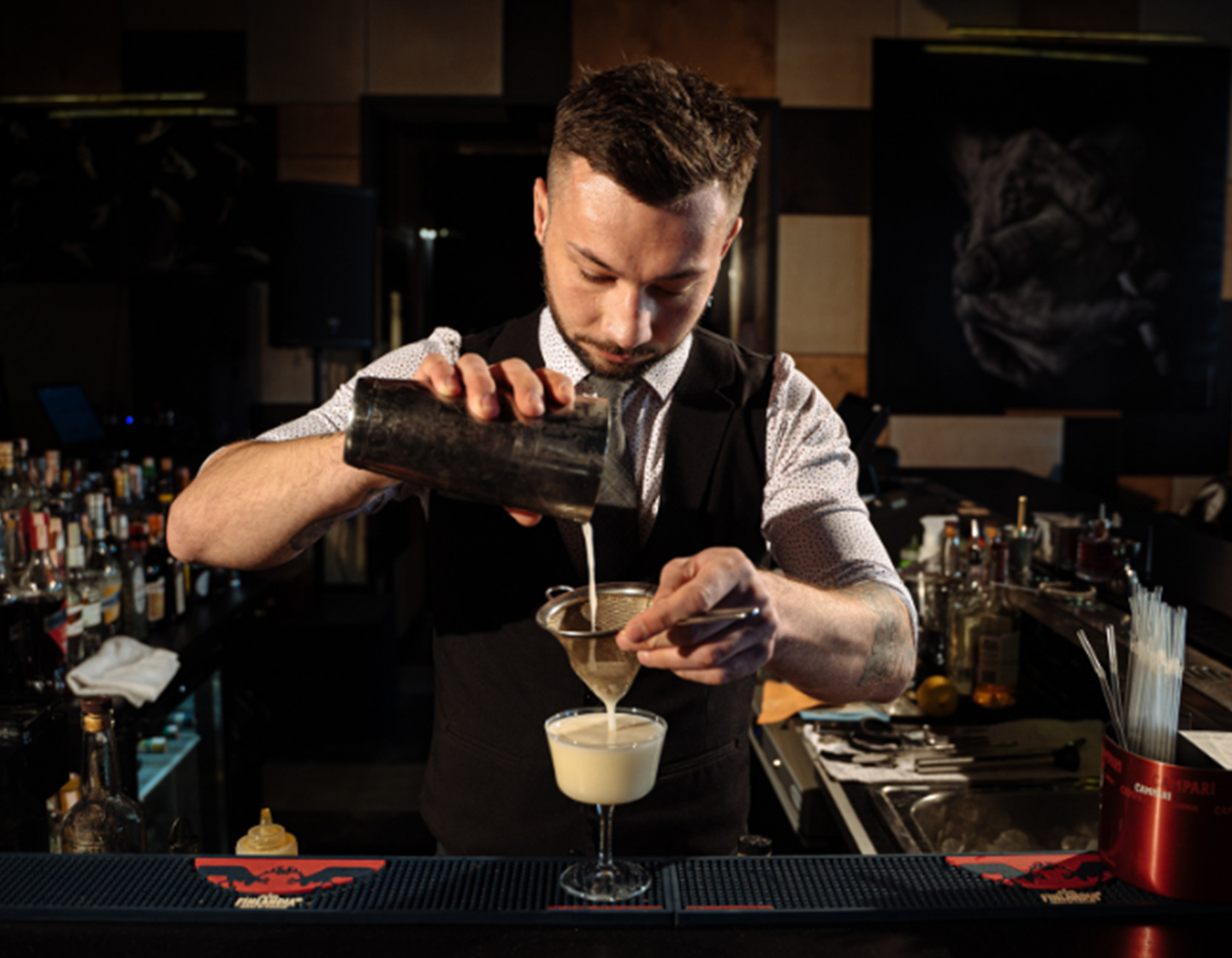
Bar Skills: How To Use A Cocktail Strainer
Using a cocktail strainer correctly is vital to achieving a visually appealing and well-balanced cocktail. Learn more about the history of the tool and best practices for using cocktail strainers when making drinks.
Estimated reading time: 5 minutes
The Ritual
The ritual of sipping a well-crafted cocktail is not just about the taste but also about the artistry and tools behind its creation. One such indispensable tool, the cocktail strainer, boasts an intriguing history, having evolved over time in both form and function.
It's hard to imagine a world without cocktail strainers, but these tools haven't been around for as long as you might think. In the mid-19th century, as ice became a regular feature in drinks, straining went from being a luxury to a necessity. According to David Wondrich, strainers were initially modelled after sugar-sifting spoons but by the early 1870s, numerous patents were filed for various strainer designs, each striving to perfect the process of straining a cocktail.
HOW TO USE A COCKTAIL STRAINER
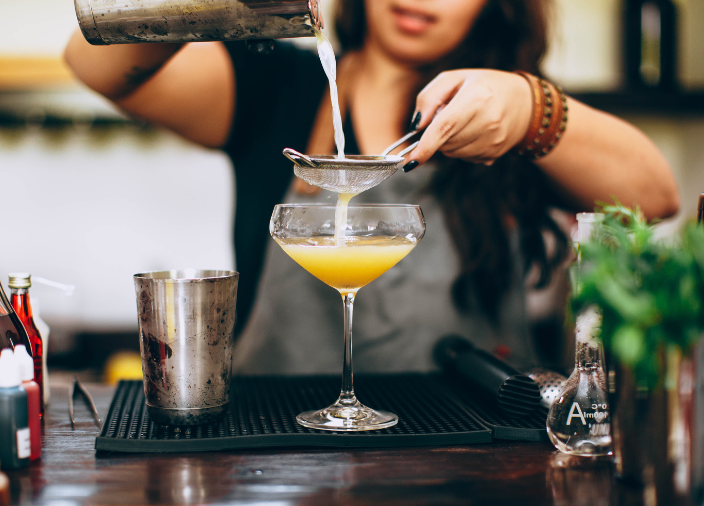
HOW TO USE A COCKTAIL STRAINER
Using a cocktail strainer correctly is vital to achieving a visually appealing and well-balanced cocktail. Here are some best practices for using cocktail strainers:
Select the Right Strainer: Choose the appropriate strainer based on the cocktail you're preparing. A Hawthorne strainer is suitable for most shaken drinks, while a julep strainer works well with stirred concoctions. Drinks containing large amounts of fruit pulp or crushed herbs should be double strained (see below).
Positioning the Strainer: Place the strainer in the mouth of your tin or mixing glass. Hold the tin between your thumb and middle finger while placing your index finger over the top of the strainer to hold it in place. This should be a one-handed hold to allow you to hold a Fine Mesh Strainer with your other hand.
Pouring Smoothly: Tilt the mixing vessel slightly while pouring the cocktail through the strainer to control the flow and prevent splashing.
Double Straining (Optional): For drinks that require an extra-smooth texture, consider double straining by placing a fine mesh strainer over the cocktail glass in addition to using the main strainer.
TYPES OF STRAINER
Over time, various styles of cocktail strainers emerged, each with its unique design and functionalities. Some of the most common types include:
Hawthorne Strainer
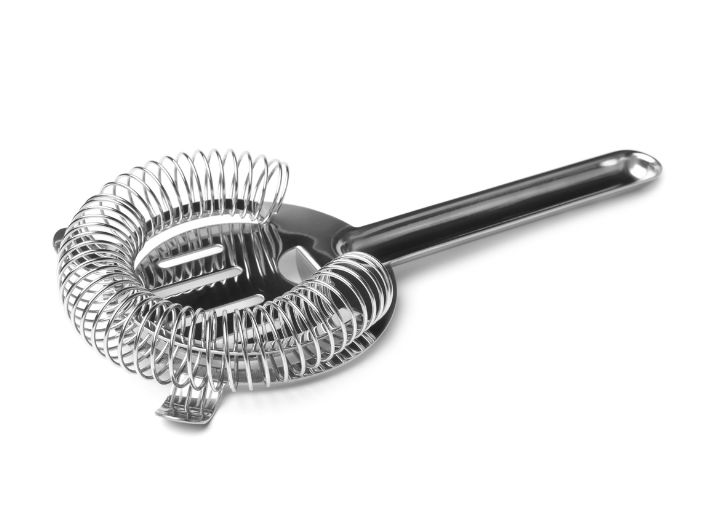
Hawthorne Strainer
In the sea of patents, one name emerged victorious: the Hawthorne strainer. Patented in 1892, it was lauded for its adaptability and easy cleaning features.
Confusingly, its name wasn't derived from its inventor, William Wright, or even the Manning, Bowman company which became well known for producing them. The Hawthorne strainer owes its name to a Boston bar, The Hawthorne Café, a link forged through Denny P. Sullivan, who owned the bar and held the rights to Wright’s patent. (Tomky, 2016)
The name "Hawthorne" eventually began to represent a style more than a brand and over time, underwent several design refinements and variations, however, the basic template remains unchanged.
The classic Hawthorne strainer remains the most widely used today and its versatility and ease of use make it a favourite among bartenders. This strainer features a coiled spring around its edge, allowing it to fit snugly into the mixing glass or shaker. The spring also acts as a stabilizing mechanism during pouring. Note that it won’t catch finer particles such as ice shards, fine fruit pulp or herbs.
Julep Strainer
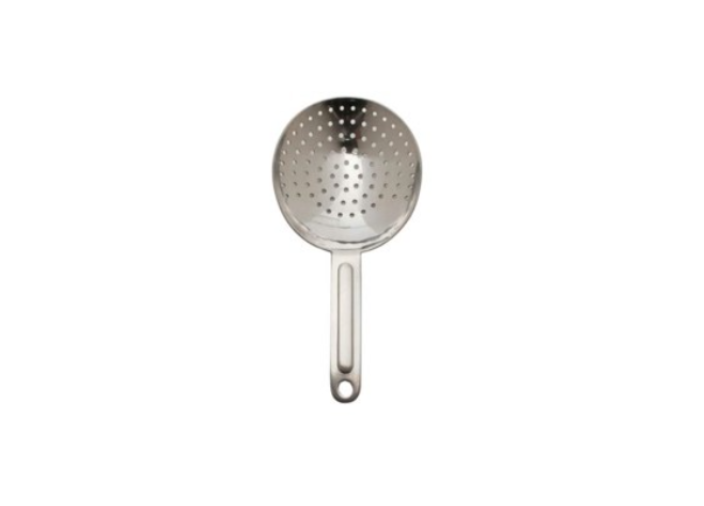
Julep Strainer
The julep strainer, with its shallow bowl and perforated design, is ideal for straining stirred cocktails and those served over crushed ice. Although not as commonly found in bars as the Hawthorne, its graceful appearance and historical significance often make it a must-have item for cocktail enthusiasts and serious bartenders.
Fine Mesh Strainer
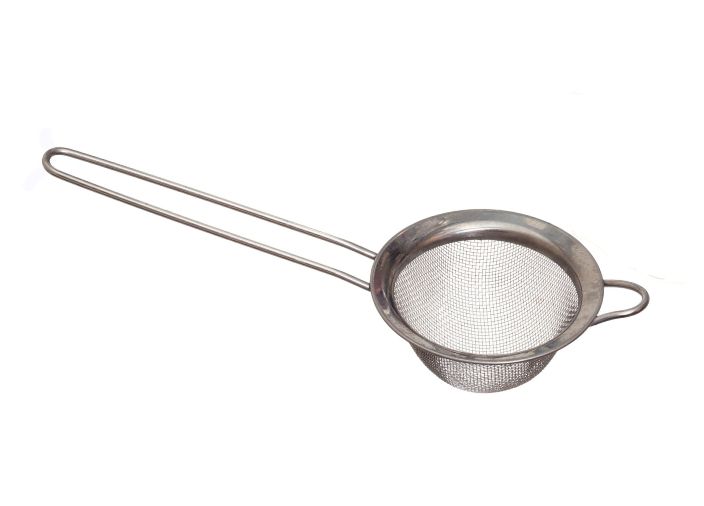
Fine Mesh Strainer
For drinks that require meticulous filtration, such as those containing fresh herbs or citrus pulp, the fine mesh strainer comes to the rescue. Its ultra-fine mesh effectively captures even the tiniest particles, ensuring a smooth and refined texture.
Key Takeaways
Strainers appeared as bar tools in the mid-19th century, as ice became a regular feature in drinks.
They were initially modelled after sugar-sifting spoons.
Many patents were filed to create the perfect strainer, one name emerged victorious: the Hawthorne strainer - invented by William Wright.
The name comes from the Hawthorne Café, a link forged as the bar’s owner held the rights to the patent.
The Hawthorne strainer features a coiled spring around its edge, allowing it to fit snugly into the mixing glass or shaker
The julep strainer is ideal for straining stirred cocktails and those served over crushed ice.
The fine mesh strainer is for drinks requiring meticulous filtration
Using a cocktail strainer correctly is vital to achieving a visually appealing and well-balanced cocktail.
Receive regular industry news, recipes and inspiration direct to your inbox for free when you sign up to the Diageo Bar Academy newsletter.
Related content
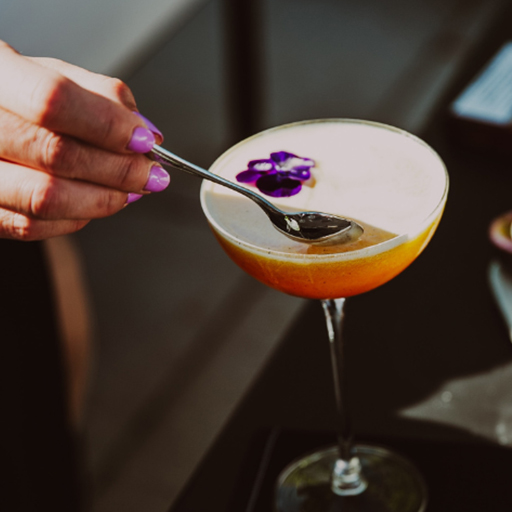
The Bar Spoon
The barspoon is a versatile tool that has come to represent the craft and skill of bartending. Learn more about the range of uses and styles to suit personal of this essential bar tool.
The Essential Guide to Speed Pourers
The speed pourer ensures a drink is prepared with speed and accuracy. Learn more about this important gadget and the role it plays in the hospitality industry.
All About the Jigger
Explore the jigger's history and usage to understand more about its contribution to the art of cocktails.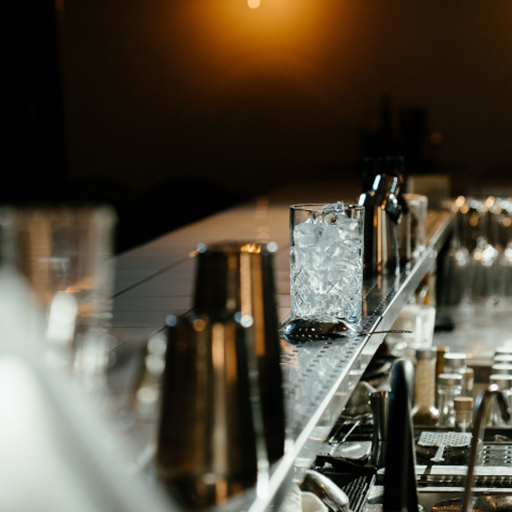
Mixing Glasses
A mixing glass is a key piece of equipment for any stirred drink, especially classic such as a Manhattan or a Martini. Discover more about the history of this essential tool, its various forms, and the nuances that define its use.
